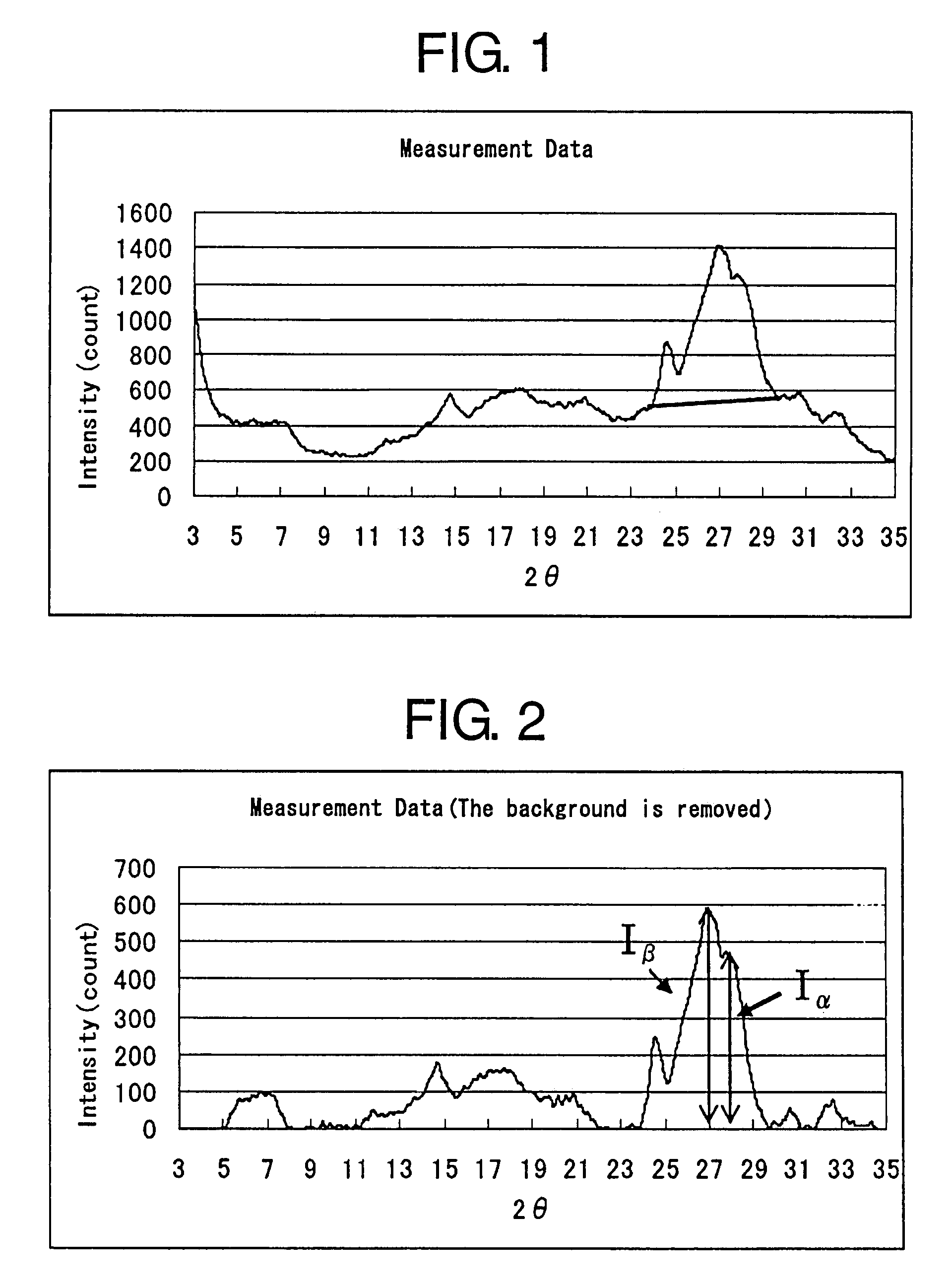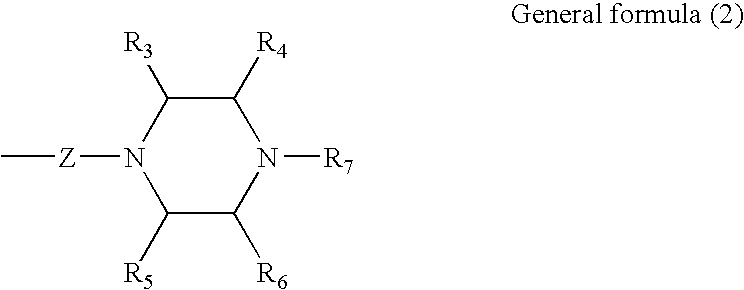Process for producing dichlorodiketopyrrolopyrrole pigment of the alpha modification, dichlorodiketopyrrolopyrrole pigment of the alpha modification produced by the process, and coloring composition using the same
a technology of dichlorodiketopyrrole and alpha modification, which is applied in the direction of organic dyes, inks, organic chemistry, etc., can solve the problems of inability to obtain dichlorodiketopyrrole pigment of modification comprising inability to achieve dichlorodiketopyrrole pigment of modification, and inability to achieve fine and size-controlled particles, and achieves high size control, less production cos
- Summary
- Abstract
- Description
- Claims
- Application Information
AI Technical Summary
Benefits of technology
Problems solved by technology
Method used
Image
Examples
example 1
[0079]450 g of tert-amyl alcohol dehydrated with molecular sieve and 30 g of metallic sodium having been cut into small pieces were added to a 1-L, stainless steel-made reaction vessel equipped with a reflux tube in an atmosphere of nitrogen, followed by heating to 90° C. After 1 hour, the mixture was heated to 100° C. or above and, under reflux, stirring was continued for 10 hours with vigorously stirring molten metallic sodium. Thus, metallic sodium was dissolved to prepare an alcoholate solution.
[0080]Separately, 120 g of tert-amyl alcohol having been dehydrated with molecular sieve, 88 g of diisopropyl succinate and 100 g of p-chlorobenzonitrile were added to a 500-ml, glass-made flask and were heated to 90° C. under stirring to dissolve, thus a solution of the mixture being prepared. This heated solution of the mixture was gradually dropwise added at a constant rate over 2 hours to the above-described alcoholate solution heated to 100° C. under vigorous stirring. After completi...
example 2
[0083]600 g of methanol, 600 g of water and 117 g of acetic acid were added to a 3-L, glass-made jacketed reaction vessel, and were cooled to 0° C. To this cooled mixture was added by portions, under vigorous stirring, a 90° C. solution of alkali metal salt of dichlorodiketopyrrolopyrrole pigment having been prepared in the same manner as in Example 1 with cooling using a coolant so as to keep the temperature at 10° C. or lower. Thus, a dark red suspension was generated. After vigorously stirring this suspension for 1 hour, the product was collected by filtration using a Nutsche. Subsequently, 300 g of methanol and 1,000 ml of water cooled to 10° C. were sprinkled over the filtration product to wash. Then, the aqueous paste of the crude crystals was subjected to heat treatment at 80° C. for 24 hours using a reduced-pressure drier to dry till the water content thereof became less than 1% by weight. Yield was 108.4 g. Subsequently, the product was grinded in a hammer mill type grinder...
example 3
[0085]600 g of methanol, 600 g of water and 117 g of acetic acid were added to a 3-L, glass-made jacketed reaction vessel, and were cooled to 0° C. To this cooled mixture was added by portions, under vigorous stirring, a 90° C. solution of alkali metal salt of dichlorodiketopyrrolopyrrole pigment having been prepared in the same manner as in Example 1 with cooling using a coolant so as to keep the temperature at 10° C. or lower. Thus, a dark red suspension was generated. After cooling the suspension to 0° C. and vigorously stirring for 2 hour, the product was collected by filtration using a Nutsche. Subsequently, 300 g of methanol and 1,000 ml of water cooled to 10° C. were sprinkled over the filtration product to wash. Then, the aqueous paste of the crude crystals was subjected to heat treatment at 80° C. for 24 hours using a reduced-pressure drier to dry till the water content thereof became less than 1% by weight. Yield was 109.8 g. Subsequently, the product was grinded in a hamm...
PUM
| Property | Measurement | Unit |
|---|---|---|
| temperature | aaaaa | aaaaa |
| 2θ | aaaaa | aaaaa |
| BET specific surface area | aaaaa | aaaaa |
Abstract
Description
Claims
Application Information
 Login to View More
Login to View More - R&D
- Intellectual Property
- Life Sciences
- Materials
- Tech Scout
- Unparalleled Data Quality
- Higher Quality Content
- 60% Fewer Hallucinations
Browse by: Latest US Patents, China's latest patents, Technical Efficacy Thesaurus, Application Domain, Technology Topic, Popular Technical Reports.
© 2025 PatSnap. All rights reserved.Legal|Privacy policy|Modern Slavery Act Transparency Statement|Sitemap|About US| Contact US: help@patsnap.com



